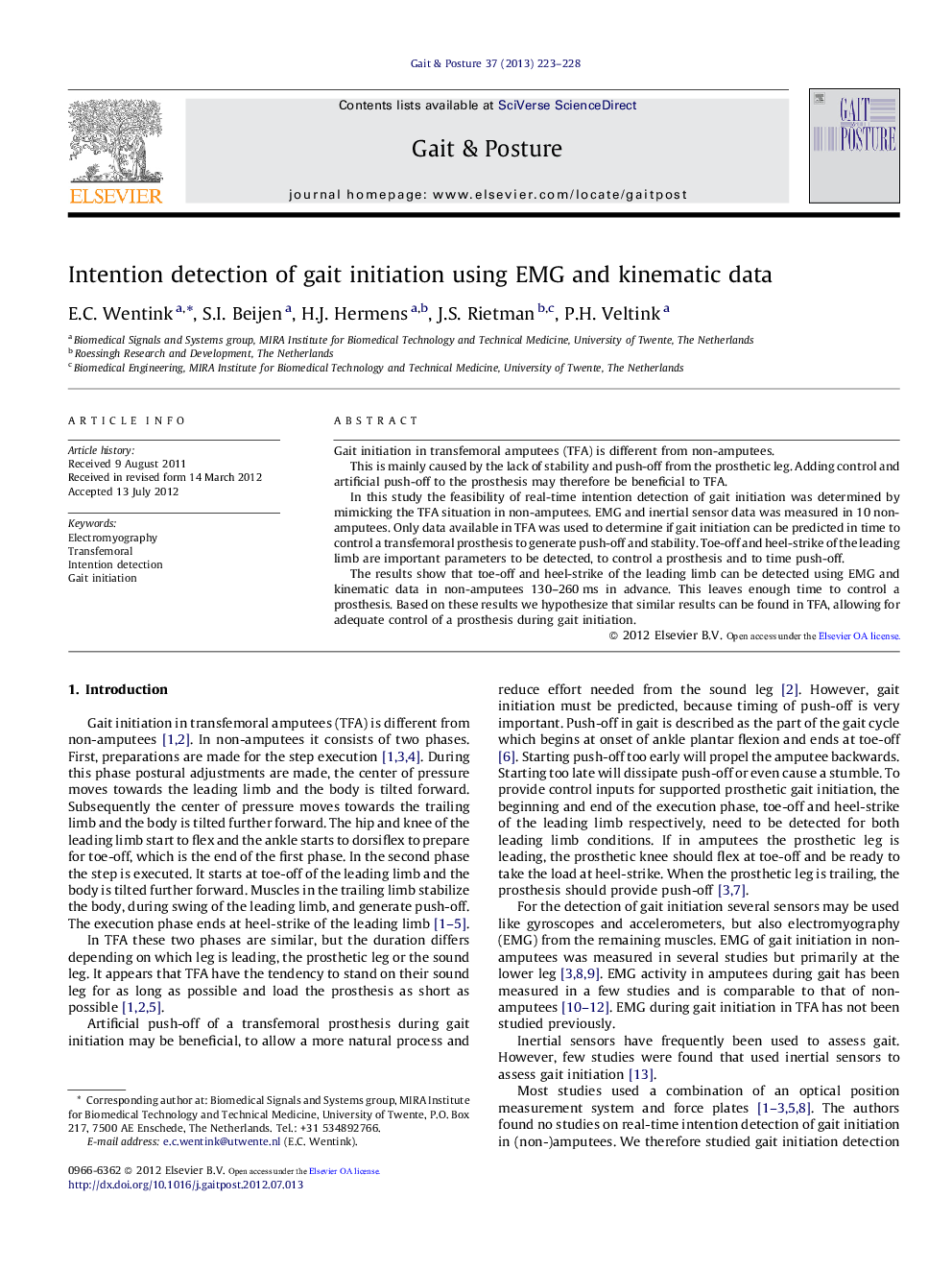| Article ID | Journal | Published Year | Pages | File Type |
|---|---|---|---|---|
| 6207935 | Gait & Posture | 2013 | 6 Pages |
Gait initiation in transfemoral amputees (TFA) is different from non-amputees.This is mainly caused by the lack of stability and push-off from the prosthetic leg. Adding control and artificial push-off to the prosthesis may therefore be beneficial to TFA.In this study the feasibility of real-time intention detection of gait initiation was determined by mimicking the TFA situation in non-amputees. EMG and inertial sensor data was measured in 10 non-amputees. Only data available in TFA was used to determine if gait initiation can be predicted in time to control a transfemoral prosthesis to generate push-off and stability. Toe-off and heel-strike of the leading limb are important parameters to be detected, to control a prosthesis and to time push-off.The results show that toe-off and heel-strike of the leading limb can be detected using EMG and kinematic data in non-amputees 130-260Â ms in advance. This leaves enough time to control a prosthesis. Based on these results we hypothesize that similar results can be found in TFA, allowing for adequate control of a prosthesis during gait initiation.
⺠We studied if artificial push-off in transfemoral prosthesis would be feasable. ⺠We measured real-time intention detection of gait initiation in non-amputees. ⺠Gait initiation of leading and trailing limb was detected by EMG and kinematic data. ⺠Toe-off and heel-strike were detected 130-260 ms in advance for both limbs. ⺠This leaves enough time to give push of in transfemoral prosthesis.
